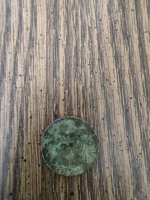S
stefen
Guest
The rip-rap was transported and used mainly in OC and SD counties...
I was involved solely in the open-pit mining operation and restoration...not in the placement of the groins...
My graduate thesis was on open pit mine restoration and was published and eventually led to this project...
I was involved solely in the open-pit mining operation and restoration...not in the placement of the groins...
My graduate thesis was on open pit mine restoration and was published and eventually led to this project...








